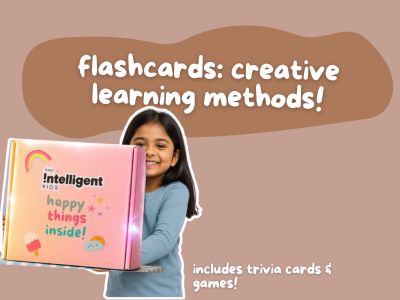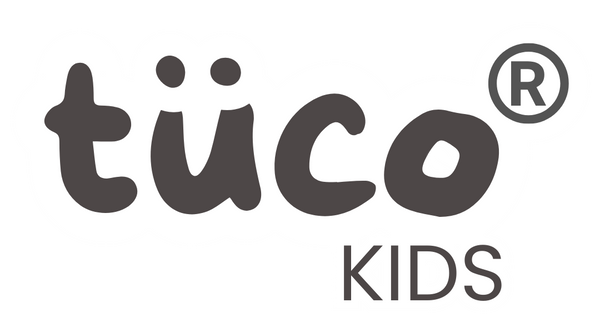
Benefits of Flashcards for Kids: Creative Ways to Learn
Share
In today’s fast-paced world, parents are always looking for simple and effective tools to help their children learn. One of the oldest yet most powerful learning tools is the flashcard for kids. From the very first black-and-white cards shown to babies to more advanced subject-based flashcards for schoolchildren, this learning method grows with your child. Flashcards are interactive, visual, and playful making them an excellent way to combine learning with fun.
What Are Flashcards for Kids?

Flashcards are:
- Flashcards are small, portable cards with pictures, words, or numbers that help kids recognize and recall information quickly.
- They are simple, versatile, and great for learning anywhere.
- Topics can range from alphabets, numbers, animals, and shapes to vocabulary, science, geography, and more for older kids.
Just like flashcards grow with children, Tuco Kids supports them at every stage with a complete range of safe and gentle products. From oat-based soaps and nourishing shampoos to sunscreens, lotions, and soothing gels, Tuco Kids makes daily care routines as simple and worry-free as learning through play.
Why Parents Should Use Flashcards
-
Boosts Memory Retention
Flashcards use spaced repetition, reviewing information in short bursts to strengthen memory pathways. This helps kids store knowledge long-term, from alphabets for preschoolers to multiplication tables for older children. -
Builds Vocabulary & Language Skills
Seeing a picture with its word (like an apple) helps kids connect images, sounds, and words. This multi-sensory approach grows vocabulary, improves comprehension, and even supports learning new languages and sight words. -
Sharpens Focus & Concentration
Flashcards are short and engaging but still demand attention. Regular use trains kids to concentrate better, improving their ability to stay focused in schoolwork and daily tasks. -
Encourages Active Recall
Unlike passive reading, flashcards push kids to recall answers, like solving “2 + 3 = ?”. This active retrieval makes learning stronger and more lasting. -
Makes Learning Fun
Flashcards turn lessons into games — memory match, timed challenges, or storytelling. Kids enjoy the play, while parents enjoy seeing real learning happen with less resistance.
At What Age Can Parents Start Using Flashcards?
Flashcards can be introduced from infancy, but the style should change as the child grows:

-
0–1 year (Infants): High-contrast black-and-white flashcards with simple shapes and patterns. Babies can only see contrasts in early months, so these are perfect.
-
1–3 years (Toddlers): Flashcards with simple pictures of everyday objects (apple, dog, car) and bright colors. Introduce basic words.
-
3–5 years (Preschoolers): Alphabet, numbers, shapes, animals, colors, and simple action cards (“run,” “jump”). Start including question-based cards (“What is this?”).
-
6–8 years (Primary School): Sight words, simple math (addition, subtraction), storytelling flashcards.
-
9–12 years (Tweens): Subject flashcards like geography (countries, flags), science facts, multiplication tables, and advanced vocabulary.
- Teens (13+): Academic flashcards for history dates, formulas, or language learning.
Benefits of Flashcards for Kids
-
Cognitive Growth
Flashcards aren’t just about rote learning — they stimulate the brain’s hippocampus and prefrontal cortex, the areas responsible for memory and processing. The act of repeatedly recognizing a picture or word helps strengthen neural connections, making recall faster and more natural. For example, a child who practices number flashcards daily will start solving basic math without counting on fingers. This early boost in memory and processing speed sets the foundation for more complex learning later in life. -
Language Development
One of the biggest advantages of flashcards is building vocabulary. When kids see a flashcard with an apple and hear the word “apple,” they are linking visual (image), auditory (sound), and verbal (speech) learning together. Over time, they don’t just recognize words — they learn to use them in sentences. Parents can extend this by asking questions like “What color is the apple?” or “Can you think of another fruit?” This transforms flashcards into a tool for language comprehension, pronunciation, and sentence formation. -
Critical Thinking
Beyond basics, advanced flashcards in science, geography, or riddles push kids to compare, reason, and solve problems. This develops logic, categorization, and real-world problem-solving abilities. -
Confidence Building
Each correct answer feels like a small win, giving kids instant motivation. Quick feedback and encouragement boost self-confidence and make them more eager to tackle bigger challenges. -
Parent-Child Bonding
Flashcards are more fun when shared. Playing together creates laughter, trust, and joyful memories, showing kids that learning is safe, positive, and something they can enjoy with parents.
Creative Ways Parents Can Use Flashcards
-
Picture Recognition Games: Hold up a card and ask your child to name the object.
-
Memory Match: Place cards face down and play a memory game.
-
Storytelling with Flashcards: Pick three random cards and create a story using them.
-
Action Flashcards: Show a “jump” card and have kids act it out. Great for toddlers.
-
Timed Challenges: Flip through flashcards quickly to make it exciting for older kids.
-
Group Play: Kids can quiz each other with flashcards, building teamwork.
Teaching Styles with Flashcards
-
Visual Learning: Best for younger kids who respond to pictures.
-
Auditory Learning: Say the word aloud while showing the picture.
-
Kinesthetic Learning: Combine movement (“show card for ‘jump’ and let them act it”).
- Interactive Learning: Ask open-ended questions like “Where have you seen this?” to spark conversation.
Flashcards may look simple, but they are one of the most versatile and effective learning tools parents can use. From helping babies recognize shapes to supporting teens in mastering exam content, flashcards grow with your child’s age and needs.
The real magic lies in how they’re used as a fun, engaging, and pressure-free activity. With creativity and consistency, flashcards for kids can turn study time into playtime, while boosting memory, language, focus, and imagination.

